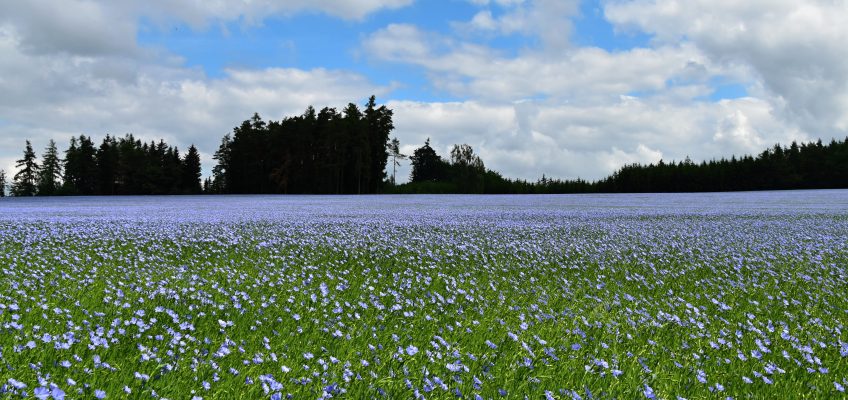Flaxseed has been attracting attention recently as an emerging future crop for WA farmers, primarily due to the rising global trend in “superfoods”. These nutrient packed foods are rising sharply in popularity and consumer awareness, but are they a viable option for growers looking to diversify their crop rotation?
Southern Dirt have recently commissioned a report from Strategy Matrix, a consultancy business focused on stakeholder engagement and consultation, facilitation services, strategic planning, and business development, to consider new and emerging opportunities in flaxseed production for Australian farmers.
Prompting Southern Dirt to undertake this research was a previous 2017 study which explored new opportunities in new and emerging agricultural industries in Australia. The Strategy Matrix report acknowledges this previous piece of work undertaken by Coriolis Australia in 2017 for AgriFutures, in which flax seed/linseed was rated as one of the “best” industries due to health benefits and attributes. This quantitative assessment was made of global trade data against growth metrics ($ value of exports and compound annual growth rate %). Coriolis rated industries as “good, better or best” based on market demand size and growth.
Qualitatively, Coriolis rated flax seed/linseed highly for being capital intensive to produce, mechanically harvested, having value added opportunities, wide spread of markets and buyers, origin important or called out at point of sale, attractive competitive set and the ability to leverage Australian country reputation.
So what are the market opportunities that flaxseed can present to growers?
Flax has shifted significantly from a predominately industrial product to being a specialist ingredient in health food and well-being products due to consumers wanting oils with naturally high oleic or fatty acid content.
In addition to its commercial capacity as a “functional food”, other diverse opportunities for flaxseed include animal feed, industrial products such as varnish, printer’s ink and linoleum, an edible oil and fibrous applications in blankets, carpets, towels and mattresses.
Ann Maree O’Callaghan, Director and founder of Strategy Matrix who authored the report, participated in one of six deep-dive breakout sessions that tackle some of the big questions for the future of farming in Australia at TECHSPO in August. Her session, “Future Crops and Systems” looked at a myriad of emerging industries, and how farmers can diversify their crops to capitalise on this opportunity.
O’Callaghan is pragmatic about what is required from farmers to take advantage of the superfood boom. “While there are opportunities and challenges throughout the supply chain to capture value, research and prefeasibility work focused on these superfood crops has identified eight key focus areas that are critical for success. They include knowledge of the plant and its agronomy, cultivar development, processing technologies and systems, a whole supply chain focus, development of end products and markets, partnerships and collaboration and of course, attracting finance.”
Whilst the potential of flaxseed as a future crop for WA is evident, it does not come without shortfalls and challenges. Domestically, key flax competitors are imported oil and linseed as well as other niche seed oils like hemp and nut oils. Importer and exporter VVRS Australia’s extensive product range gives an indication of competing products.
In addition to flax seed oil they trade in oil from canola, castor, celery seed, coconut, corn, cotton seed, cumin seed, hazelnut, mustard, olive, palm, peanut, rapeseed, rice bran, safflower, sesame, soyabean and sunflower as well as vanaspathi ghee. As well as competing with other soft oils, flax oil competes with specialised olive oils, hard oils like palm oil, butter and dairy products as well as tallow.
In the 5 years to June 2013 Australia imported 1,689 tonnes of linseed oil (including crude oil) per annum with the majority imported from Europe with Belgium being the largest supplier. The Australian Oilseed Federation, in assessing the prospects of linseed (flaxseed) and other oilseeds like mustard (oil and seed) for food, rated domestic markets for linseed and oil as attractive with good industry capacity and competitiveness. Export markets were not rated as favourably, indicating that the opportunity for Australian growers primarily lay locally.
Despite some of these challenges, flaxseed fits well into crop rotations, being particularly useful as a break crop for cereal production. If kept free of grass weeds it will help control or reduce soil borne cereal root diseases such as take-all, and may unlock the potential for crop diversification for some Australian farmers.
The opportunities associated with flaxseed, as well as the prospect of other future crops such as industrial hemp, continues to be a passion point for Southern Dirt, the grower group who conceptualised TECHSPO and have seen it go from strength to strength over the past few years.
Tracey Hodgkins, Southern Dirt CEO, reiterates the importance of a future-focus when it comes to cropping. “Understanding and development of new cropping industries offer land owners an opportunity for greater flexibility and profitability in a challenging marketplace, as well as a way to bring diversity into our systems. Profitable break crops need to be developed carefully and collaboratively. Research shows we need to stay ahead of food trends, global competitors and bring a value add focus to our region in order to remain sustainable in the future.”


